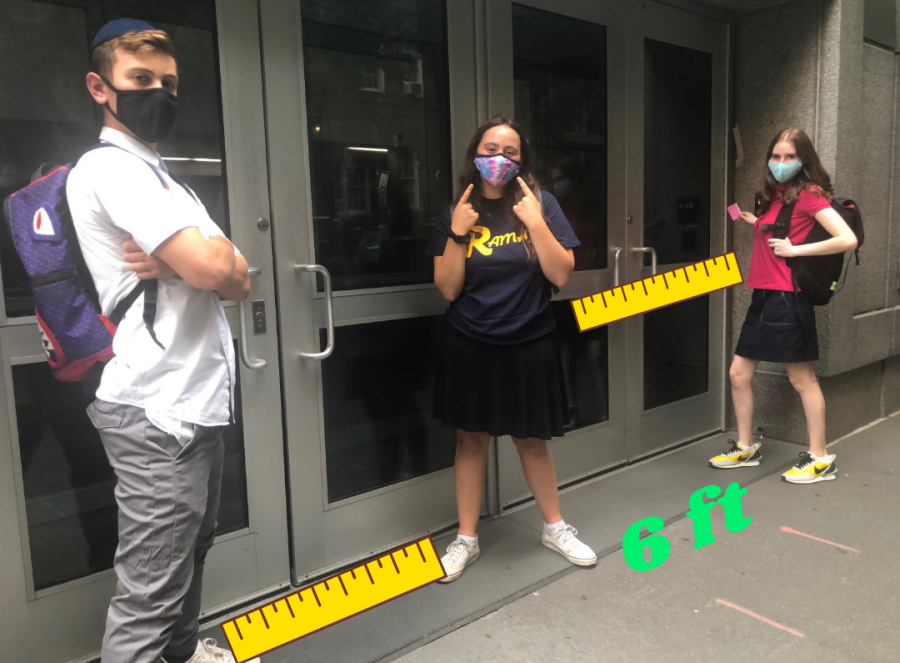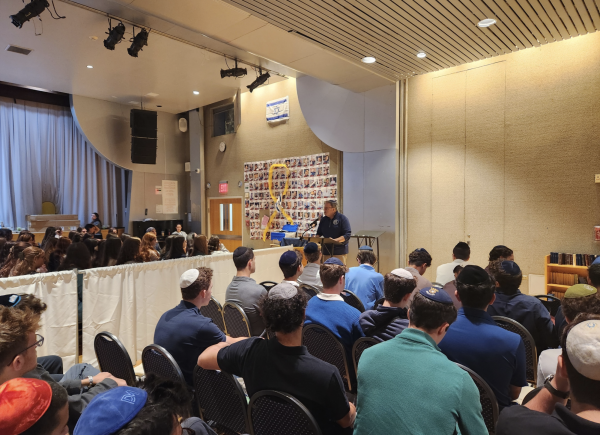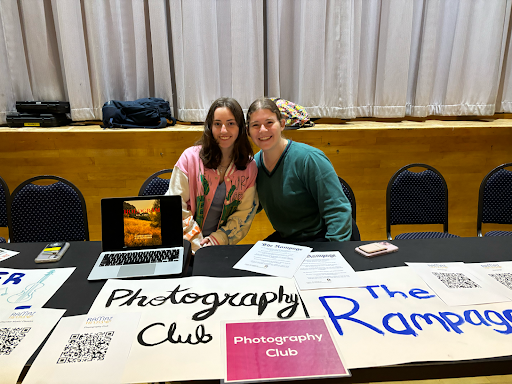Six Months Later…. Finally Back on 78th!
Ramaz’s New Hybrid Learning System
Last March, when COVID-19 hit New York City, the city that never sleeps quickly shut down. In-person school was closed to prevent the spread of the virus, and classes switched to online for the rest of the school year. Six months later, the city is no longer on lock down, and yet, it is not up-and-running. This places schools in a difficult position. Bringing students back to proper protocols without changes could spread the virus and start a second wave of COVID-19. Being able to see teachers and students in person is essential to a healthy learning environment. This situation tasked the Ramaz administrators with finding a balance between ensuring the health and safety of students and faculty while maintaining efficient and beneficial learning.
On July 22, Rabbi Stochel emailed tentative guidelines for Ramaz’s reopening plan for September to the upper school students’ parents. The administration decided to begin the school year with hybrid schooling, meaning a combination of in-person learning and Zoom learning. Ninth and eleventh graders will learn on 78th Street three times a week,
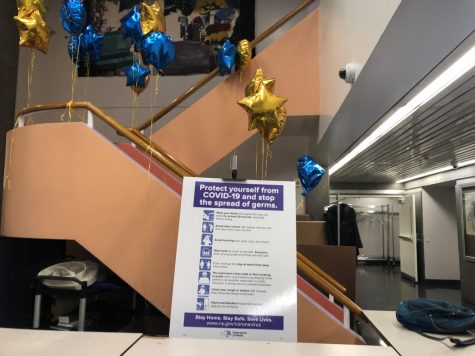
and tenth and twelfth graders will learn in person the other two days of the week. On days when a student’s grade is not in the building, he or she will have classes on Zoom. Governor Andrew Cuomo announced on August 10 that schools have the green light to open, solidifying Ramaz’s reopening plan. Since then, he has announced that New York City public schools will be opening in-person on September 21.
To be as safe as possible while in the building, the administration mandated various precautions for students and faculty. In Rabbi Stochel’s email, he detailed the various precautionary measures that will be taken, including those at home and in school. Parents are required to download the “Magnus app” on their phones to submit information about the health of their children each morning before sending them to school. Data such as a student’s temperature or symptoms will be used to determine if he or she can attend school that day. During a webinar about the school’s plans on August 10, Mr. Cannon was adamant about the importance of transparency during self-screening for the health of the community. In terms of safety in the building, students and teachers must wear masks at all times, with the exception of eating. During the webinar, Ms. Johanna Shlomovitch said, “We will be giving every student and employee a Ramaz mask on the first day of school” to ensure that everyone will be equipped with one throughout the year. Employees with high exposure jobs will wear more protective equipment, and there will be polycarbonate shields in front of the security desk. Every night after school ends, the cleaning staff will sanitize the building to prepare it for the next day.
The administration was concerned with the exposure that may come with hundreds of students entering the building at the same time and chatting in the hallways before davening. Therefore, they decided that buses will arrive from 8:00 AM to 8:20 AM before the first-period class at 8:30 AM.
By having class before davening, the administration plans that students will not congregate by grade outside of their respective davening rooms, rather, they will be separated into their first-period classrooms. Originally, the plan was to have davening in students’ respective first-period classrooms. However, the administration decided that although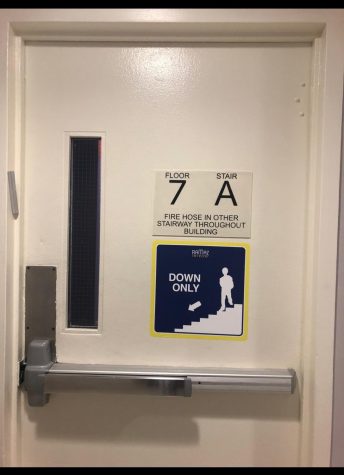 seemingly beneficial, that option would not be possible because of students who need their tefillin or want to pray in their own nusach. The plan is still not finalized, and Rabbi Kenny Shiowitz is hard at work creating single grade Ashkenazi and Sefardi minyanim.
seemingly beneficial, that option would not be possible because of students who need their tefillin or want to pray in their own nusach. The plan is still not finalized, and Rabbi Kenny Shiowitz is hard at work creating single grade Ashkenazi and Sefardi minyanim.
Surprisingly, the average number of students per class is increasing. The small classrooms in the building are not large enough to host socially distant learning environments. Thus, double classrooms, the art room, the library, the Beit Knesset, the auditorium, and the gym are the only spaces large enough for students to learn. Because there are so few rooms, the class sizes must increase to fit all the students.
The administration decided that students will be grouped by grade as opposed to by family; students will only interact with peers in their grade. The building will be split in half —above and below the third floor— so that each grade will remain separate from others. The largest grade, the freshmen, will go into the building on the same days as the smallest grade, the juniors, and the sophomores and seniors will be in the building at the same time. Freshmen and juniors will come to school on Mondays, Wednesdays, and Fridays, and sophomores and seniors will learn in-person on Tuesdays and Thursdays. There are only two Fridays before the Chagim, but many noticed that Fridays are not alternating. The freshmen go to school on Fridays, so they will have more time to bond with each other in person.
Lunch will take place in the last classroom the student had before lunch. The school will not be providing lunch or snacks, and each student will be required to bring his or her own food. The administration was considering having boxed school lunch. Rabbi Stochel explained the complexity behind the seemingly simple issue of where lunch will be supplied. He and the rest of the administration have to take into account which lunch option will reduce sharing food between students.
Because there will not be a time when all four grades are in the building together, the school cannot have an in-person school-wide assembly; any school-wide assemblies will have to be online. There will be more frequent grade meetings to talk about the current situation and advisory sessions to support students emotionally through these difficult times.
After classes end, the facilities staff will sanitize the school, so the next grades can enter a clean building. To thoroughly clean the building, the maintenance staff will need the building to be completely empty, meaning all after school clubs will be held on Zoom. This will also ensure that all members can attend club meetings; it will give the in-school students time to get home and the at-home students access to the meeting. To make sure that students who commute will have time to make it to their club meetings, they will all take place in the evening. During the August 10
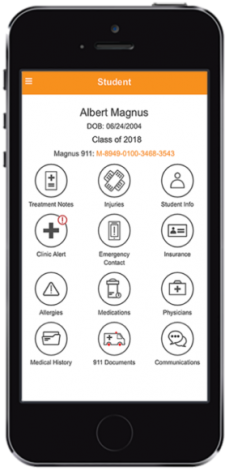
webinar, Rabbi Stochel said that the Yeshiva League’s hopes to reschedule non-contact spring sports to the fall. He said, “That is still being debated and still being discussed. I don’t want to raise expectations but that is something the athletic representatives of high schools are working hard on.”
Another problem the school has faced is transportation; not all usual transportation options are guaranteed to be available when school starts. Public transit is open to students for use, and New Jersey Ramaz busses are already contracted with Rainbow Busing. According to Ms. Shlomovitch, “[The] relationship with Supertrans [who supplies bussing to and from White Plains, Westchester, Brooklyn, and the 5 towns] has deteriorated over the past few months,” but the administration is working to find another bus company to replace them. Great Neck busing will still be available. Students will sit in assigned seats, wearing masks, and all windows will be open because of the insufficient space to properly socially distance.
Students exhibiting symptoms of COVID-19 will head to the nurse’s office on the third floor, where they will be tested for coronavirus. Should a student test positive, his or her grade and their teachers will be quarantined for 14 days, and teachers who have interacted with the COVID-positive grade will be tracked to see if they had classes with the other grade in the building that day, which may cause that other grade to transfer to Zoom classes. If two students from separate grades test positive, the entire school will move online. Additionally, should a teacher test positive for coronavirus or has to quarantine, another teacher from the same department will substitute for him or her. Even though there are set guidelines, every case will be observed individually to make sure that the school does not close unnecessarily.
In the wake of a crisis, the administration has worked incredibly hard to formulate a plan for opening school in the
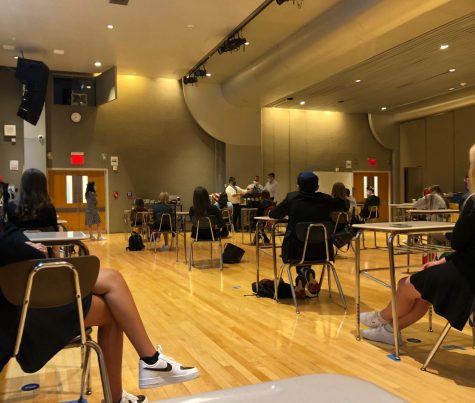
fall that creates a healthy and efficient learning environment, while also remaining incredibly conscious of the health and safety of students, faculty, and their families. The administration had to rewrite the entire school model that works both in-person and online within a matter of months, including class sizes, lunch, davening, assemblies, and clubs.

